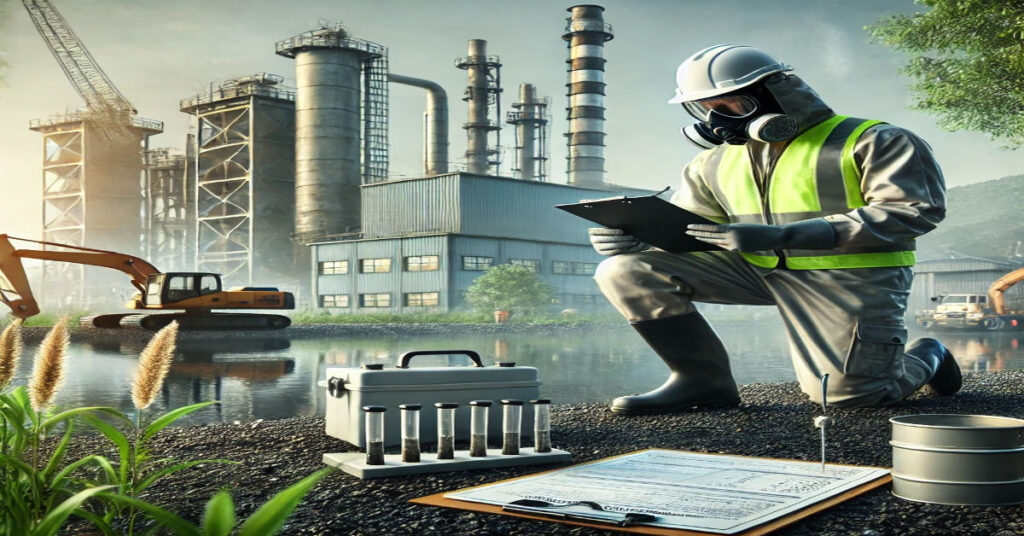Phase 1 Environmental Site Assessments (ESAs) are an essential part of due diligence for real estate transactions, particularly in commercial and industrial settings. These assessments identify potential environmental liabilities, contamination risks, and issues that may affect the property’s value or result in future cleanup responsibilities. If you’re purchasing or developing property, understanding the Phase 1 Environmental Site Assessment Cost is critical to your investment strategy.
This article will provide a detailed breakdown of what a Phase 1 ESA is, the average cost, factors influencing the cost, and how it fits into the broader environmental assessment process.
What is a Phase 1 Environmental Site Assessment?
A Phase 1 ESA is an investigative process conducted to identify any recognized environmental conditions (RECs) on a property. It’s typically performed before a property purchase, redevelopment, or refinancing to protect buyers and lenders from unforeseen environmental liabilities. The assessment adheres to standards set by ASTM International under ASTM E1527.
Core components of a Phase 1 ESA include:
- Reviewing historical land use to identify any past industrial or hazardous material activities.
- Conducting site visits to observe current conditions and identify potential environmental concerns.
- Reviewing federal, state, and local environmental records.
- Interviewing property owners, tenants, and local officials to gather additional information.
- Evaluating any potential for further environmental investigation (Phase 2 or 3 assessments).
Why is a Phase 1 ESA Important?
- Risk Mitigation: Identifying existing or potential environmental risks protects property owners and investors from costly remediation.
- Regulatory Compliance: Ensures that the property adheres to environmental regulations.
- Lender Requirements: Most financial institutions require a Phase 1 ESA as part of the lending process to protect their investments.
- Preservation of Property Value: Helps buyers negotiate or plan for cleanup if contamination is discovered.
How Much Does a Phase 1 Environmental Site Assessment Cost?
The cost of a Phase 1 ESA varies depending on several factors, but on average, you can expect to pay between $2,000 and $4,500. However, for large, complex, or high-risk properties, the cost can exceed $6,000 or more. The following sections detail the factors that influence the cost of the assessment.
Factors Influencing Phase 1 ESA Costs
1. Property Size and Location
- Large properties: Larger sites require more extensive inspection and data collection, which increases costs.
- Urban vs. rural locations: Urban sites typically have more extensive historical data and potential contamination sources, leading to higher costs compared to rural sites.
2. Historical Land Use
- Properties with a history of industrial or commercial activities, such as gas stations, factories, or car dealerships, require more research and investigation.
- A property that has consistently been used for low-risk activities, like residential housing, may have a lower Phase 1 ESA cost.
3. Availability of Records
- Easy access to municipal and environmental records can reduce costs, while sites with incomplete or difficult-to-obtain records may require more time and effort.
- Certain locations may have limited digital records, requiring in-person visits to government offices.
4. Property Complexity
- Properties with multiple buildings, underground storage tanks, or mixed-use developments require more investigation and data collection, which drives up the cost.
- Facilities that have housed chemical production or hazardous waste disposal will need a more detailed audit, contributing to higher costs.
5. Consultant’s Expertise and Scope of Work
- The reputation and qualifications of the environmental consultant can significantly impact costs.
- Companies with more experience in large-scale or specialized projects may charge a premium.
- The scope of work can vary depending on the client’s needs, such as additional services like soil sampling or air monitoring.
6. Environmental Conditions and Potential RECs
- If the property is suspected to have environmental contamination or if RECs are identified early, additional investigation and documentation may be required, increasing costs.
- High-risk sites, such as landfills or former industrial zones, typically require a deeper analysis, increasing overall costs.
7. Turnaround Time
- Expedited services often come with higher fees. If you require the assessment to be completed quickly for a pending property transaction, the cost may rise.
Breakdown of Typical Cost Components
- Document Review: $500–$1,000
- Reviewing past ownership records, land use history, and public environmental data.
- Site Visit and Inspection: $1,000–$2,500
- Visual assessment of the property for evidence of environmental hazards or contamination.
- Interviews and Data Collection: $300–$800
- Speaking with current and former property owners, tenants, and local officials to gather additional information.
- Report Preparation: $500–$1,500
- Compiling the findings into a comprehensive report with recommendations.
How to Minimize Phase 1 ESA Costs Without Compromising Quality
- Preliminary Research: Gather as much information as possible before hiring a consultant. This can reduce the time they spend collecting basic details.
- Choose the Right Consultant: Look for firms with experience in your property type. A specialist will likely complete the assessment faster and more accurately.
- Request Multiple Quotes: Comparing several quotes allows you to find competitive pricing without sacrificing quality.
- Define the Scope Clearly: Avoid unnecessary costs by discussing your specific needs with the consultant and eliminating services you don’t require.
What Happens After a Phase 1 ESA?
Possible Outcomes:
- No Recognized Environmental Conditions Found: No further action is needed, and you can proceed with the property transaction.
- Potential Environmental Issues Identified: The report may recommend conducting a Phase 2 ESA, which involves sampling and laboratory testing.
- Immediate Risks Found: If severe contamination is detected, cleanup measures or remediation plans may be required before moving forward.
Understanding the Broader Environmental Assessment Process
- Phase 1 ESA: Preliminary assessment to identify any potential environmental liabilities.
- Phase 2 ESA: Involves testing, soil sampling, and lab analysis to confirm the presence of contaminants.
- Phase 3 ESA: Focuses on developing remediation plans and implementing cleanup measures if contamination is found.
When is a Phase 1 ESA Mandatory?
- Real Estate Transactions: Many commercial and industrial property transactions require a Phase 1 ESA as part of the due diligence process.
- Bank or Lender Requirements: Financial institutions often mandate it before approving loans to protect their investments.
- Redevelopment Projects: If you’re converting a site for new uses, a Phase 1 ESA helps avoid surprises during construction.
- Government-Regulated Properties: Properties subject to environmental regulations, like former factories or landfills, require thorough investigation.
FAQs
1. How long does a Phase 1 ESA typically take?
It usually takes 2–4 weeks, depending on the property size, complexity, and availability of records.
2. Are Phase 1 ESA costs tax-deductible?
In many cases, they are considered part of acquisition or development expenses and may be tax-deductible.
3. What happens if contamination is found during a Phase 1 ESA?
A Phase 2 ESA will be recommended to confirm the extent of contamination through testing.
4. Is a Phase 1 ESA required for residential properties?
Typically, no. However, larger multi-family properties or those with prior industrial use may require one.
5. Can I skip a Phase 1 ESA if the property looks clean?
Skipping it is risky. Contamination is not always visible, and a Phase 1 ESA protects you from hidden liabilities.
6. Can Phase 1 ESA costs vary by region?
Yes, urban areas with more complex regulatory environments often result in higher costs.
Conclusion
A Phase 1 Environmental Site Assessment is a crucial step in real estate transactions, especially for commercial and industrial properties. While the Phase 1 Environmental Site Assessment Cost may seem significant, it is a worthwhile investment that protects you from future liabilities and financial losses. By understanding the factors that influence the cost and taking strategic steps to manage expenses, you can ensure a smooth property acquisition process while minimizing environmental risks.







